As new parents, one of the top priorities is ensuring the safety and well-being of your precious little one, especially during those precious hours of slumber. The way you position your baby while they sleep can significantly impact their safety and overall sleep quality.
Understanding the safest sleeping positions for newborns is crucial in creating a secure sleep environment and mitigating the risk of sudden infant death syndrome (SIDS). Providing a safe infant sleeping environment keep babies safe and healthy.
But what is the safest sleeping position for babies? To help you understand the best sleeping positions for babies and newborns, we’ve compiled all the crucial information you need to know. So, scroll down to know more!
In This Article
Which is the safest sleeping position?
To know safe sleeping positions for babies, it is important to understand the movement patterns of newborns as well as safe sleep strategies. Look at the below positions to know which is the safest sleeping position for babies:
The Back-to-Sleep Position
The “Back-to-Sleep” position refers to placing infants on their backs to sleep, as recommended by World Health Organization (WHO). This position is endorsed because it has been associated with a significant decrease in the occurrence of Sudden Infant Death Syndrome (SIDS).
When babies sleep on their backs, their airways remain unobstructed and open, making it easier for them to breathe. Additionally, the “Back-to-Sleep” position minimizes the risk of a baby’s face being pressed into soft bedding, reducing the risk of suffocation.
However, studies found that babies who were placed on their stomachs or sides had a higher risk of SIDS compared to those placed on their backs. To void this situation, place your baby with safety concerns such as:
- Make sure your baby’s face is above the bedding
- Do not allow any soft blankets or toys near the infant, as they can obstruct their breathing
- Ensure that your baby does not overheat while sleeping in this position
- Make sure baby sleeps on a firm, flat surface
- Keep the crib or bassinet away from windows to avoid drafts
- Your baby’s head should remain uncovered while they sleep
- Use light cotton clothing to dress your baby
However, this safe infant sleep position should not be used for too long, as babies need to move and be able to move freely in their sleep. It is important to note that infants can roll over on their own from the back-to-sleep even if they are placed there initially.
The Side Sleeping Position
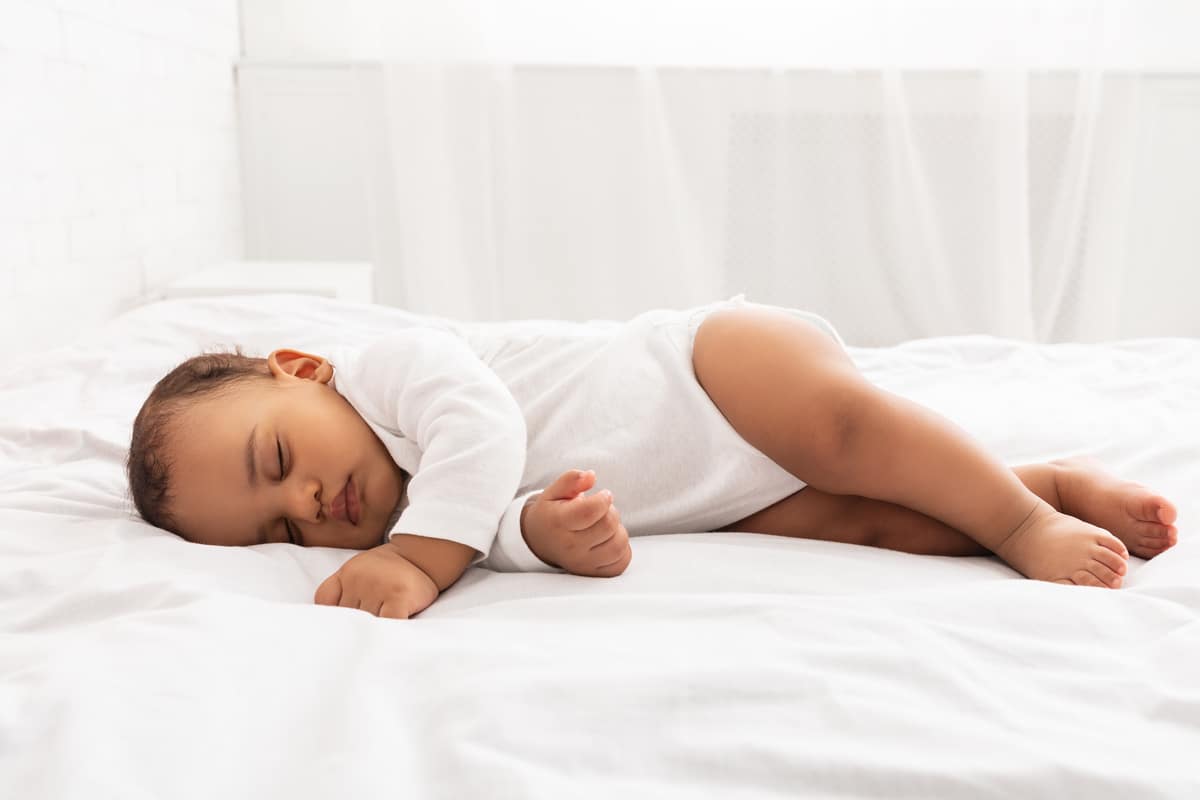
The side sleeping position for infants involves placing a baby on their side to sleep. However, this position is not generally recommended by the American Academy of Pediatrics (AAP) due to safety concerns. While side sleeping might seem like a compromise between back sleeping and stomach sleeping, it has been associated with an increased risk of sleep-related infant deaths.
In certain medical situations, a healthcare provider might suggest using the side sleeping position for an infant. Some instances where side sleeping might be suggested include:
- Gastroesophageal reflux: Baby can fall asleep comfortably in this position and it can reduce the discomfort they feel due to reflux.
- Premature babies: Premature babies may be advised by their healthcare providers to sleep in the side sleeping position as long as there are no health risks associated with it.
- Certain medical conditions: Baby to sleep on their side if they are under treatment for certain medical conditions.
It is important to note that the side sleeping position should be used in moderation, and it should only be done when instructed by a healthcare provider. If you decide to place your baby in the side sleeping position, ensure that you take all necessary precautions, such as:
- Make sure baby’s head is above the bedding
- Ensure that baby is not too hot or cold
- Use a firm mattress in the crib or bassinet
- Make sure your baby’s face is away from any pillow
- Take extra precautions if you are using a sleep sack or swaddle
- Provide a safe sleep environment for your baby by removing any objects from the crib or bassinet
Also, make sure to place your baby in the same room as you in order to prevent any potential harm or danger. If you have any concerns regarding your baby’s sleeping patterns, do not hesitate to consult your healthcare provider.
Tummy Sleeping
Tummy sleeping, or placing an infant on their stomach to sleep, is generally not recommended for unsupervised sleep due to the increased risk of Sudden Infant Death Syndrome (SIDS). Tummy sleeping can lead to a compromised airway, which can potentially result in suffocation.
To make a baby’s sleep space safe, never place any objects near the baby’s head that can obstruct their airway. According to the US National Institute of Child Health and Human Development, tummy sleeping is only recommended for awake time, when the baby is supervised and not in danger of suffocating.
Although tummy time refers to the practice of placing an infant on their stomach while they are awake and supervised. Here’s how to incorporate tummy time safely:
- Start early: Introduce tummy time to babies as early as 1-3 months of age.
- Short and frequent sessions: Start with short tummy time sessions, a few minutes at a time, several times a day.
- Choose a safe area: Place your baby on a firm, flat surface like a play mat or the floor. Ensure the area is free from hazards such as pillows, blankets, or toys.
- Engage with your baby: Get down to your baby’s level and interact with them during tummy time.
- Supervise closely: Always supervise your baby during tummy time to ensure their safety. Never leave them unattended, even for a moment.
However, tummy sleeping should not be used for unsupervised sleep. Babies should always be placed on their backs to sleep as this is the best sleeping position.
What to do if Your Baby Rolls Over in Their Sleep?
When your baby starts rolling over during sleep, it’s a sign of their increasing mobility and development. If your baby rolls over from their back to side or stomach, you should do below things such as:
- Continue back sleeping: If your baby rolls over during sleep, gently roll them back onto their backs. As other infant sleep positioners are associated with an increased risk of SIDS, they should not be used.
- Make sure to adjust their sleep environment: Make sure the sleeping area is free from any soft objects or bedding which can obstruct their breathing.
- Initial reaction: If your baby rolls over from their back to their stomach during sleep, you don’t need to immediately reposition them.
- Supervision: Baby to sleep in the same room as you in order to ensure they are safe and comfortable.
- Soothe your baby: It is important to stay calm and soothe your little ones if they roll over during sleep.
However, there are also some instances when you let your baby sleep on their stomach or sides. If your baby shows signs of being able to roll over independently, it is safe to allow them to sleep in any position they desire.
Co-sleeping: Pros and Cons
Co-sleeping refers to the practice of parents and infants sharing the same sleeping space, such as sleeping in the same bed or using a bedside sleeper. The pros and cons of co-sleeping should be carefully considered when determining whether or not it is the safest sleeping position for your baby.
Pros:
- Co-sleeping provides a sense of security and closeness between parent and infant.
- It can help babies feel safer, more loved, and secure while they sleep.
- When co-sleeping, parents are more aware of their baby’s movements and breathing.
Cons:
- Co-sleeping can increase the risk of Sudden Infant Death Syndrome (SIDS).
- it is important to be aware that co-sleeping with an adult may obstruct the infant’s airways or cause them to overheat.
- Co-sleeping also increases the risk of suffocation as baby can become stuck between bedding.
If you decide to co-sleep, following strict safety guidelines is crucial to reduce the risks associated with this practice:
- Ensure your baby’s head is always uncovered
- Make sure you and your partner are not smoking, drinking alcohol, or taking any drugs before sleeping.
- Use a firm mattress that has been tested for safety regulations.
- Keep extra bedding away from the crib/bassinet to avoid obstruction of airways.
- Do not use thick blankets or comforters in bed.
- Always place the baby on their back to sleep.
However, babies sleeping in the same bed as their parents should not be done for extended periods. Babies should be placed in a separate crib or bassinet when unsupervised, as this is the safest way to ensure your baby’s safety while sleeping.
The Role of Swaddling in Safe Sleep
Swaddling is the practice of wrapping an infant tightly in a blanket or cloth, snugly restraining their arms and legs. Swaddling has been used for centuries to help babies feel secure and sleep more soundly. It can provide several benefits:
- Swaddling helps to maintain the back-to-sleep position, reducing the risk of suffocation and SIDS.
- It can also provide warmth and comfort for babies.
- Swaddling can help reduce fussiness in newborns due to its calming effect on them
- Swaddling may also reduce the risk of your baby scratching or hitting themselves in their sleep.
When it comes to swaddling, safety should always be a top priority:
- It is important to check the tightness of the swaddle regularly and make sure that it is not too tight or constricting.
- Make sure that your baby’s head is not covered while swaddling.
- Also, it is important to stop swaddling when your baby begins to show signs of trying to roll over from the back-to-sleep position.
Remember, swaddling should be discontinued once your baby shows signs of being able to roll over. As they grow, babies develop the ability to move and change positions. It is important to provide them with a safe sleep environment that promotes healthy development and good sleep.
11 Tips For Safe Baby Sleep
Baby sleep positions are essential for the health and safety of your baby. As a new parent, it is important to understand the safest sleep position for newborn babies so you can ensure they get a good night’s rest. Here are some tips to help ensure safe sleep for your baby:
- Use a pacifier (at sleep times): The American Academy of Pediatrics (AAP) recommends using a pacifier at sleep times to reduce sudden infant death syndrome (SIDS).
- Vaccination: Make sure your baby is up-to-date with their vaccinations. Vaccinations not only protect them against a number of illnesses, but also have been associated with reducing SIDS.
- Simple crib: Choose a simple crib for your baby with no excess pillows, blankets or stuffed animals.
- Safe sleep environment: Providing a safe sleep environment can help reduce the risk of SIDS and other sleep-related risks. This includes things like room temperature, cribs that meet safety standards, and smoke-free environments.
- Firm Mattress: Use a firm and flat mattress in the crib to provide a safe sleep surface.
- Breastfeeding: Breastfeeding your baby can provide many health benefits, such as reducing the risk of SIDS.
- Do not cover baby’s head: Make sure that your baby’s head is not covered when they are sleeping, as this can cause overheating.
- Use technology: Studies have suggested that using technology such as movement monitors or video baby monitors can help reduce the risk of SIDS.
- Room-sharing: Consider room-sharing with your baby for up to six months. Room-sharing can help reduce the risk of SIDS and other sleep-related risks.
- Avoid overheating: Ensure your baby is not over-dressed or covered during sleep, as this can lead to overheating, which has been linked to an increased risk of SIDS.
- Avoid sharing the bed: Do not share the bed with your baby, as this can increase the risk of suffocation or SIDS. A separate sleeping area for your baby in the same room is a safer option.
Conclusion
In summary, ensuring a safe sleeping environment for newborn babies is of paramount importance. The back-to-sleep position is widely recommended by healthcare professionals and organizations, as it allows for clear airflow and minimizes the likelihood of obstruction. While co-sleeping and tummy sleeping might have their merits in certain situations, they should be approached cautiously and in accordance with established safety guidelines.

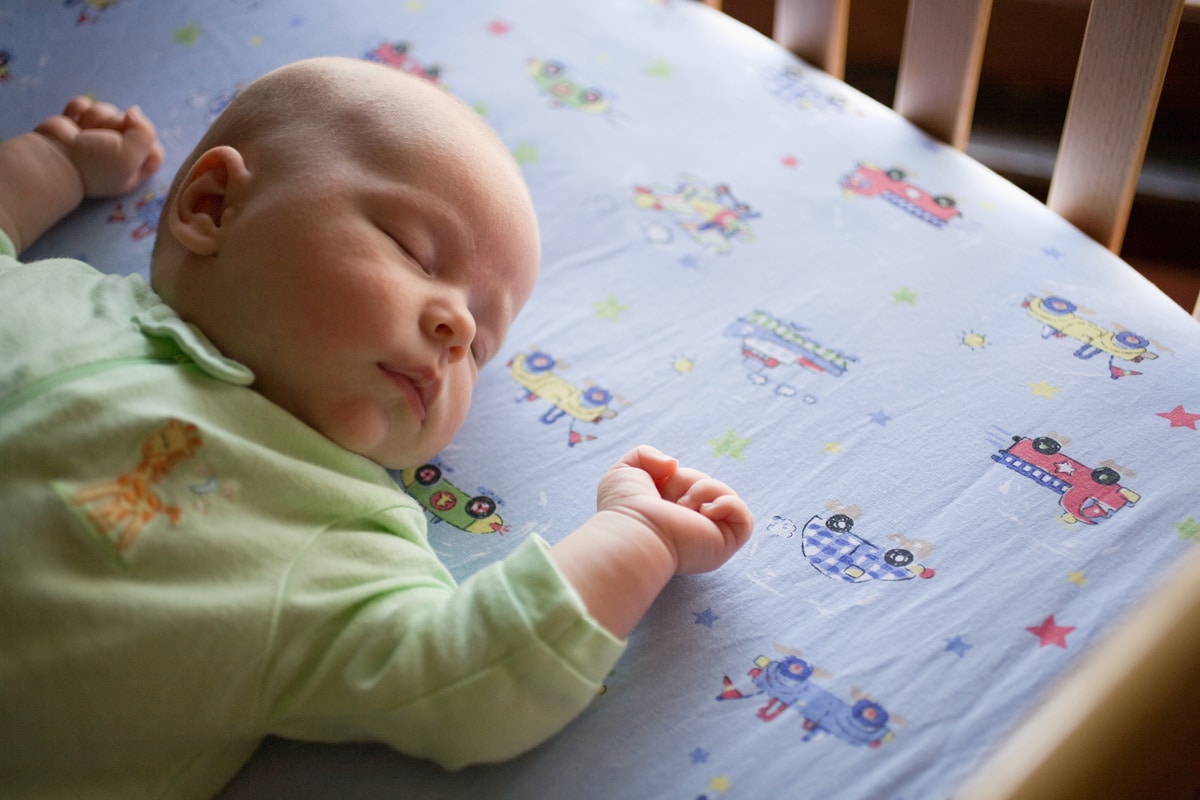
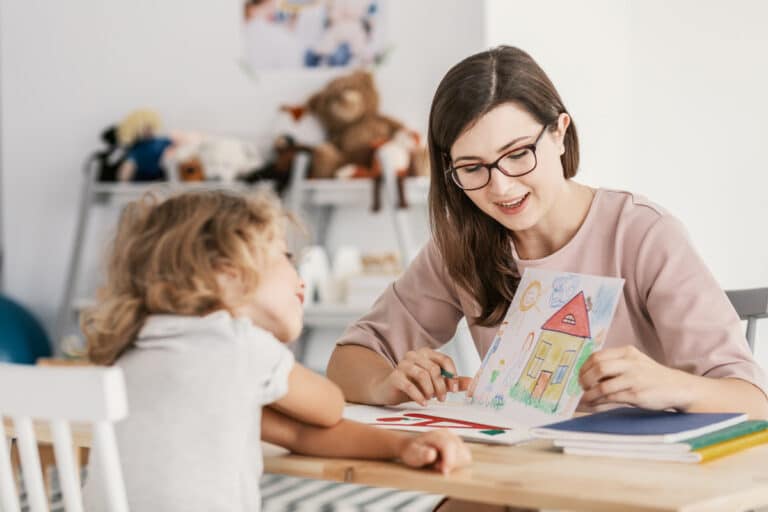
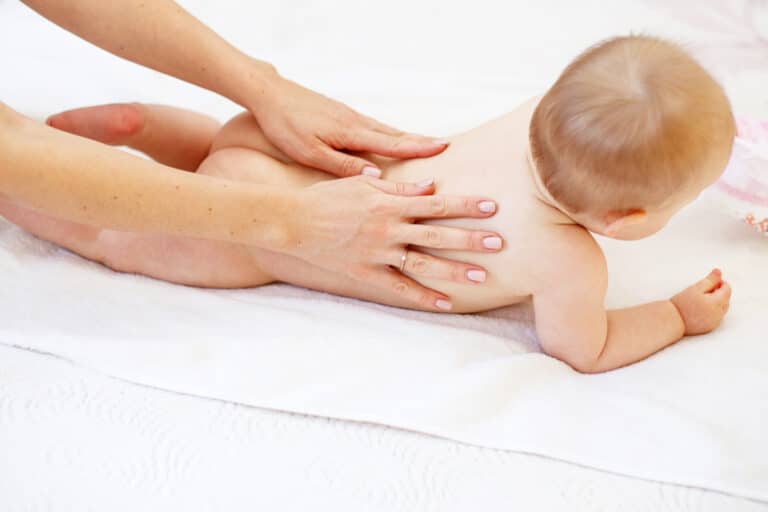
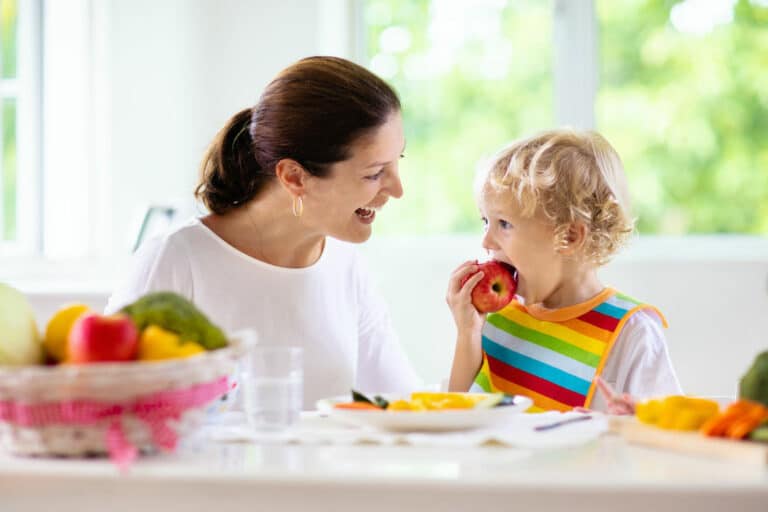
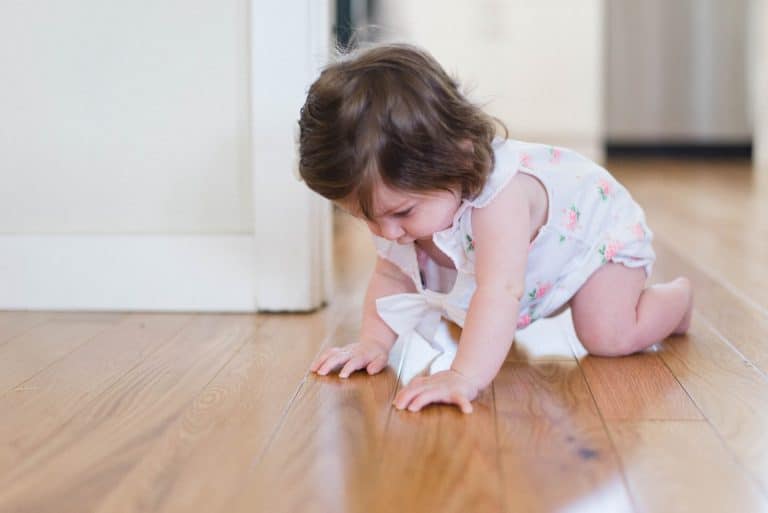




![Home Renovation Guide [2025]](/app/uploads/2021/04/design-hacks-1-378x300.jpg)
